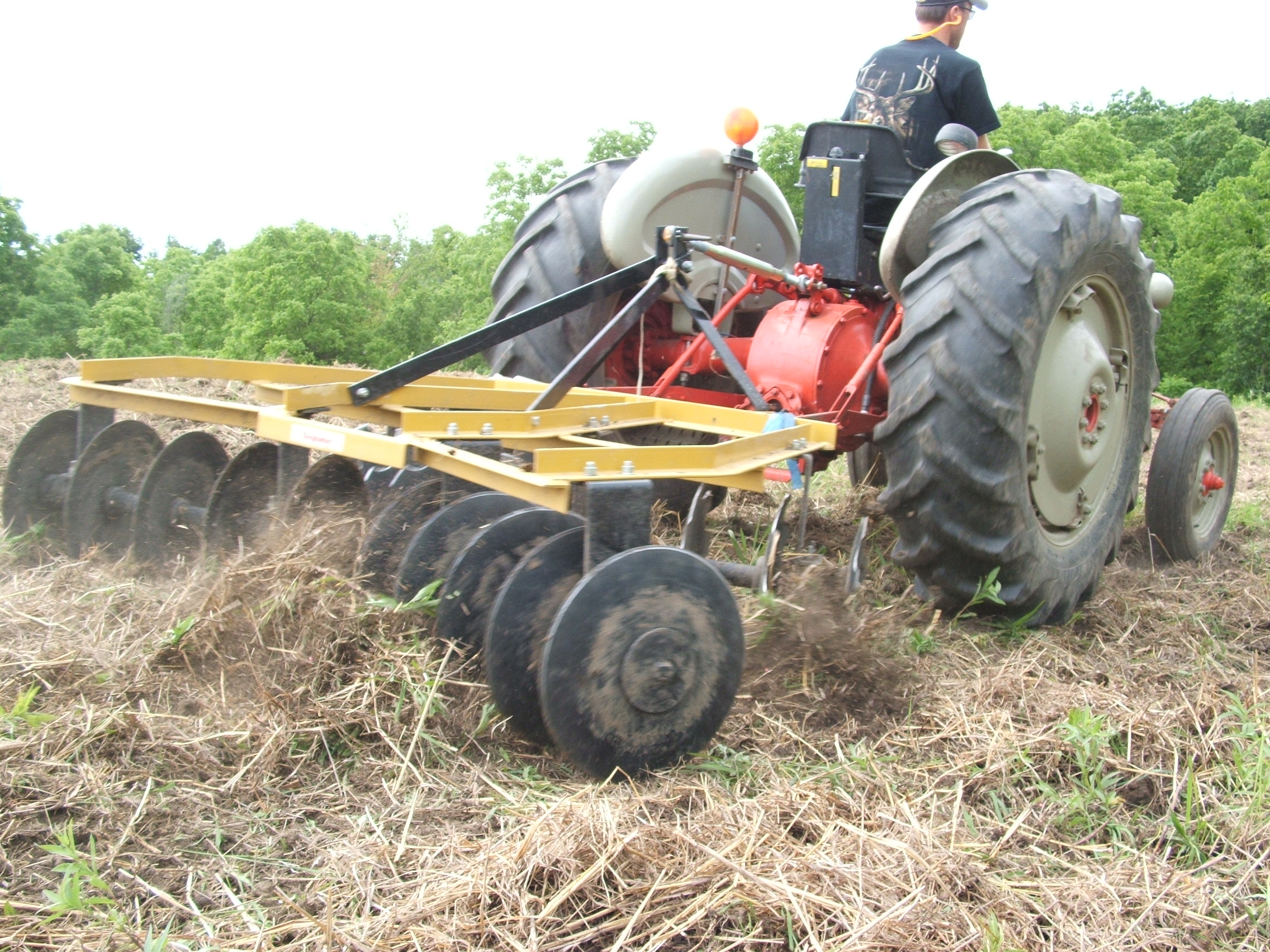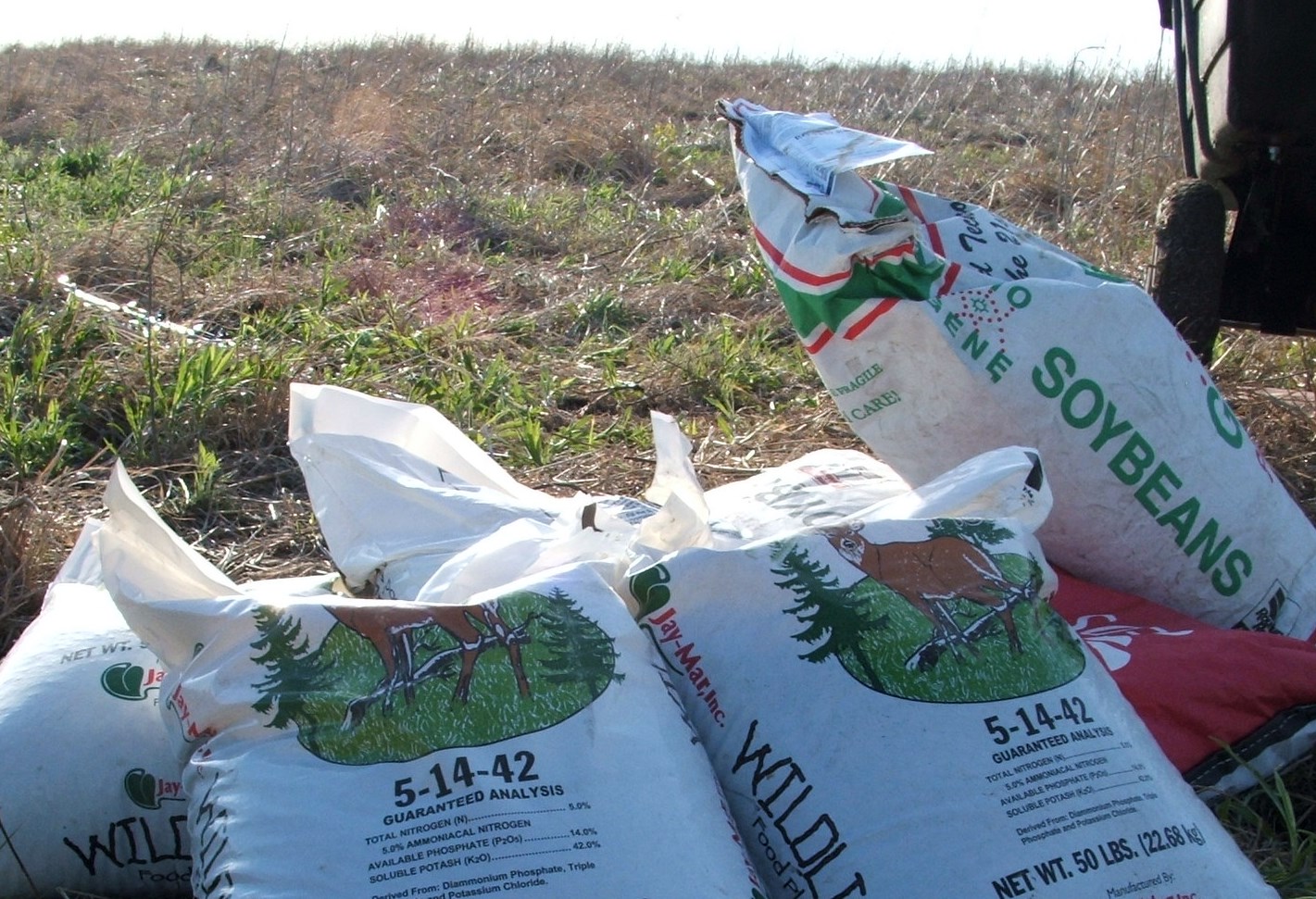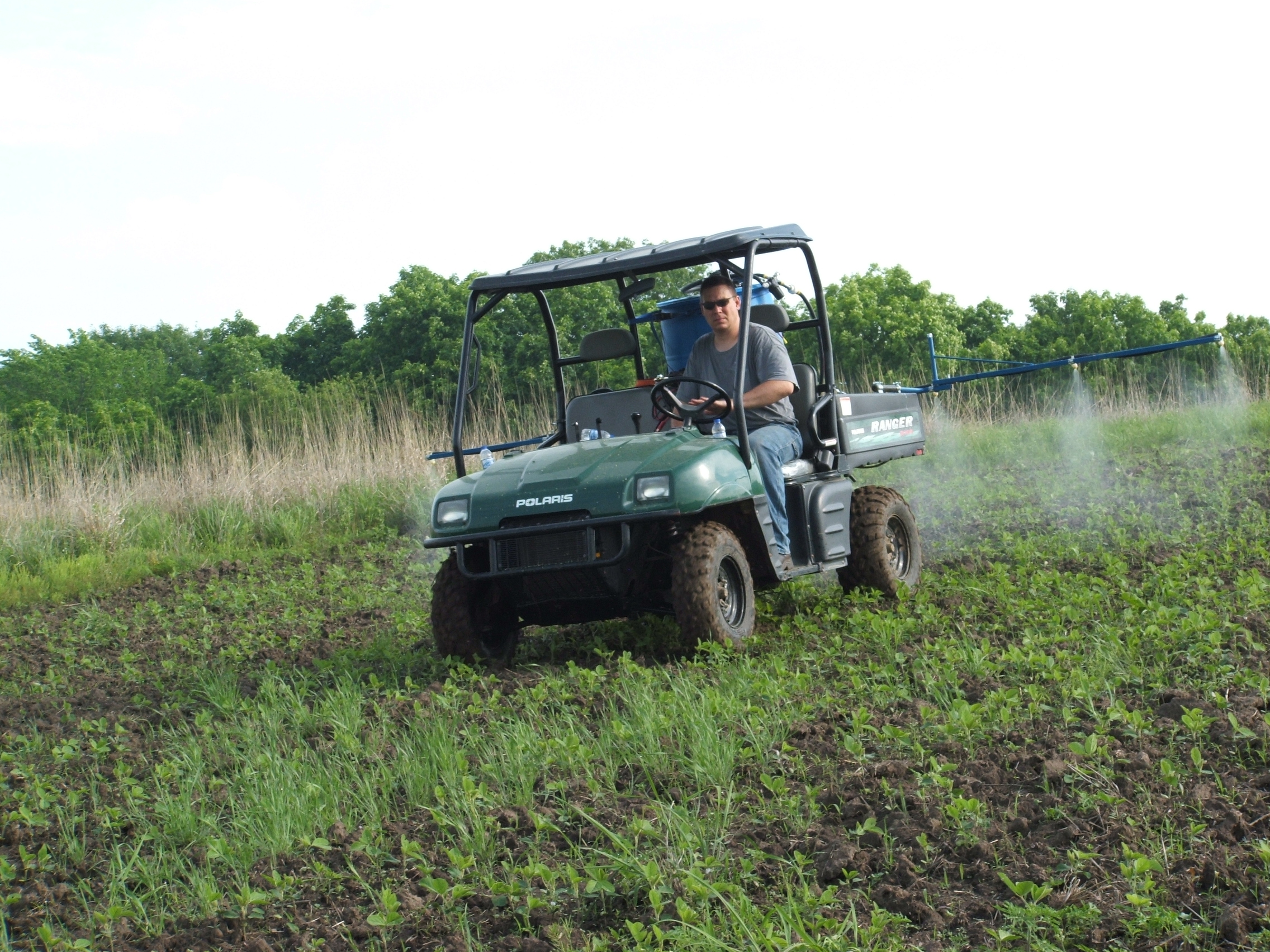Hunt 365 April 2018-Planting Soybeans Without a Planter
This month’s question comes from Al in eastern Iowa. His question is “I’ve planted some food plots in the past but have never attempted a grain plot like soybeans. I have a tractor and disc, a hand seeder, and a backpack sprayer. I have about 2 acres to work with and would like to plant soybeans in hopes they last until December. Can you give me a step by step of how to get this accomplished with the equipment I have? Is two acres enough for soybeans? Thank you for your help.”
I’d like to start with the step by step on how to plant soybeans with the equipment Al has to work with.
Planting Soybeans
First, you need to till the ground enough so that when the seed is spread you are able to go back over with the disc and work them into the ground. This can be hard with just a disc if you’re going into fallow ground or tall grasses for example. A good way to clear grasses from a first-time plot is by burning…but I’m always a little worried about burning simply because of the risk of the fire getting away from me. If burning is an option, that is a great way to clear away dead and matted weeds. If not, discing over and over will usually break up the ground enough to get some soil over top the soybean seeds at planting. You would be surprised at how little soil soybean seed needs over it to germinate. So, step one is to simply disc the ground to expose the soil.

The first step in planting with limited equipment is to till or break up the ground enough so that after you spread the seed you can till once more and get the seed covered. It doesn’t need to look pretty, just get some dirt showing!
Second, if you are planting a field into soybeans for the first time, you’ll want to inoculate the seeds. Inoculating seeds is essential for legumes (which soybeans are) so that they can produce their own nitrogen. Your seed supplier should be able to supply you with the inoculant. Follow the directions on the inoculant bag/container and try to make sure the inoculant is spread into the seeds so that all seeds are covered.
Next, you spread seed and fertilizer over the tilled ground all at the same time. I would recommend a category 2.7-3.5 Roundup ready seed for eastern Iowa planted around the end of April to the beginning of May. For 2 acres, I would use 3 bags of seed. With normal planting, a good seeding rate is 140,000 seeds per acre (one bag is 140,000 seeds). But when discing in soybean seeds, I recommend going a little heavier. Because soybeans are legumes and produce their own nitrogen when inoculated, you only need to fertilize with a low nitrogen/high potash fertilizer. I have access to pre-mixed fertilizer of 5-14-42, I use this blend at about two 50-pound bags per acre. For Al’s 2 acres, he would want to spread out 3 bags of seed and 200 pounds of a low

I use roundup ready soybeans to make spraying easier, and a high potash fertilizer like this 5-14-42.
nitrogen/high potash fertilizer. You can literally throw the seed and fertilizer out by hand, or you can use your hand seeder…do whatever you find more efficient!
The next step is to work in the seed and fertilizer using your disc. Soybean seed germinates best when planted at a depth of ½ to 1 ½ inches…but don’t worry too much if some is a little deeper and some seed is still on top the ground. Remember we planted a little heavy anticipating less than perfect germination. Once you see most of the seed in the ground (some will always be on top using this method) you are finished planting. Cultipacking the field is a good next step but entirely not necessary. You have now finished with planting your soybean plot.
The last step in this process is spraying to kill weeds. If done correctly and at the right time, you only need to do this once per year. I like to wait until about 4-6 weeks after planting to go back and spray. This is all dependent on the weather, how much rain you get, and what growth you have on your soybeans and weeds. Ideally, the soybeans will be up to about 4 or 5 inches and the weeds right there with them…maybe the weeds are slightly taller. If you spray right at this time, you’ll get good control of the weeds and hopefully the soybeans will canopy over before new weeds start to grow again. A typical backpack sprayer will hold 2 gallons of solution. To spray 2 acres of food plot, you’ll most likely need to refill a 2-gallon sprayer 6-10 times. You can either mix a solution of 1.5-2% glyphosate (the active chemical in Roundup), or figure out an application rate of .5 to 1 quart per acre. For small sprayers like Al’s backpack sprayer, it is usually easier to just keep mixing a 1.5-2% solution and keep spraying until your plot is covered. Glyphosate is rain-fast in an hour (4 hours or more is ideal) and you need the plants to be growing for it to work effectively. Spray on a warm day just after any dew has burned off from the morning. Follow all label instructions for the chemical you are using…mix a solution…and spray until your plot is covered. Using a hand held or backpack sprayer on larger food plots isn’t the most efficient method of spraying, but I’ve used a hand-held sprayer in the past for as much as 5 acres when my boom sprayer was broke.

I like to spray when the weeds and soybeans are up and actively growing. In this picture, I’m probably spraying a little earlier that ideal. If you wait just long enough for the weeds to be up and soybeans well along their way you have a good chance of only having to spray once.
Planting soybean food plots with minimal equipment isn’t really that hard. Soybeans are actually very easy to grow for a food plot. Usually the more difficult issue with growing soybeans is will they be able to withstand browsing pressure by the local deer herd, or withstand severe weather. These are sometimes the bigger reasons many people can’t grow soybeans. I’ve had soybean plots as small as one acre be a total success, and had larger plots as big as 3 acres fail. Drought and severe browsing by deer are the two biggest reasons for plot failure. If drought occurs, there is little you can do but watch your plot burn up…replanting with a fall plot. Deer pressure is in our control…at least somewhat.
If weather conditions are normal, and deer densities are “normal” (that’s subjective) there should be no reason 2 acres of soybeans won’t grow and thrive giving you a great fall plot to hunt over. Obviously, higher deer densities, poor surrounding habitat, or overall lack of summer forage will put a tremendous amount of pressure on a soybean food plot. To counter these issues, you can try to locate your soybean plot near agricultural soybeans so that less pressure is put on yours. Another thing to consider is doing what you can to increase the quality of surrounding habitat (keep reading this column for those ideas).
Under normal conditions, it is my opinion 2 acres or more of soybeans should be able to withstand deer browsing. Each hunter/landowner must assess their own situation…but if your soybeans are getting browsed off on 2, 3, or even 5 acres or more you might have a problem with an over-populated deer herd. I’ve seen this before dozens of times. My initial suggestion if this happens to you is to harvest more does…not for the sake of being able to plant a soybean plot…but because a ravaged larger soybean plot is simply a symptom of too many deer. Many hunters get emotional about this topic, and I realize it’s not a particularly popular concept with many…but it is directly relevant to Al’s question of “is two acres enough for soybeans?”. The short answer is 2 acres should be enough to plant a soybean plot. The great thing about a soybean plot is if you get around to August and you are realizing that your soybeans aren’t going to make it because of drought or over browsing, you can always till under the remaining soybeans with your disc and plant a green fall plot. It’s for this reason that soybeans are such a great choice for the food plotter. Al, I hope this helps you plant your first soybean plot.
Make sure to send any questions or ideas about what you’d like me to write about to tapeppy@gmail.com. Give me as much information and details about your scenario as you can!
